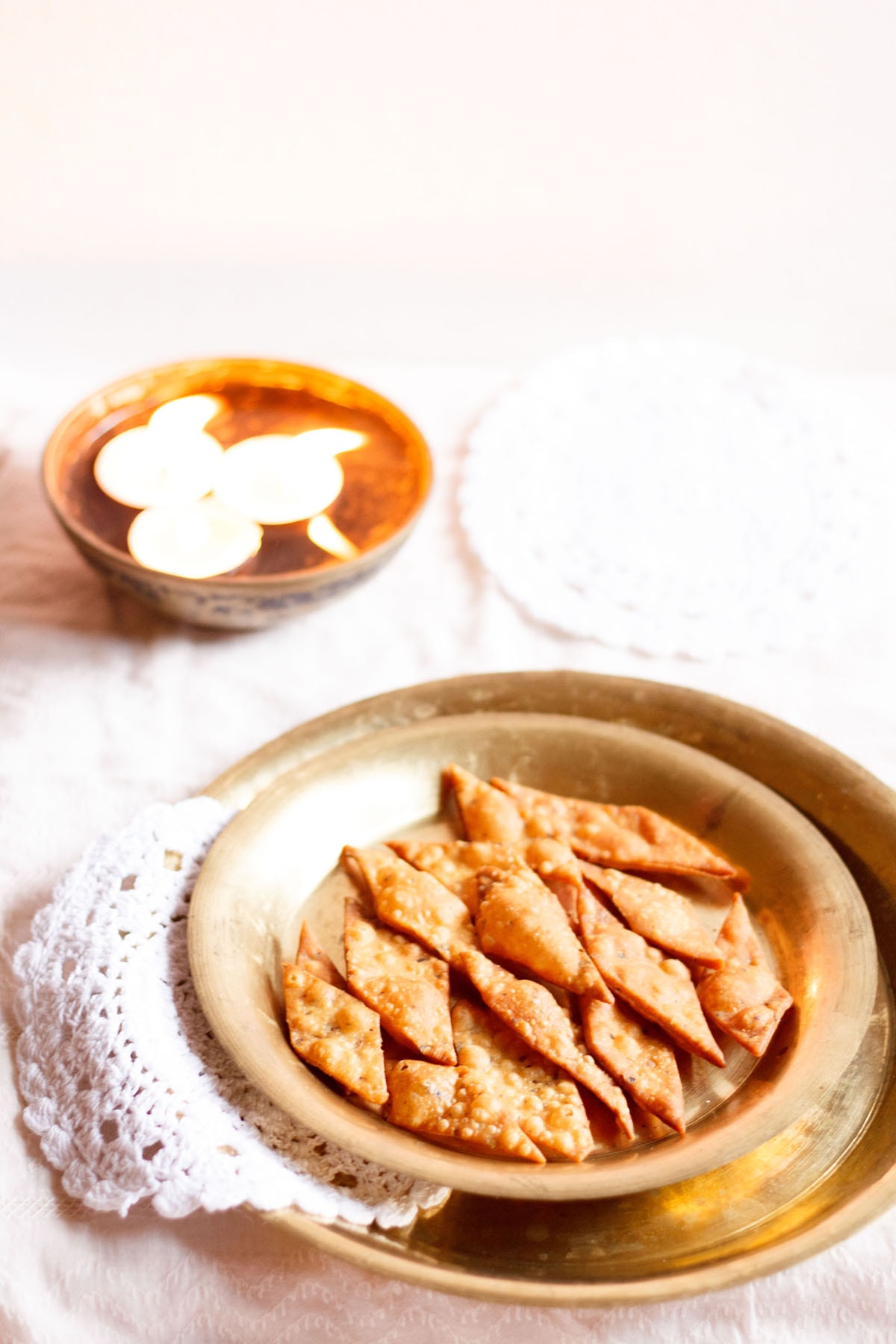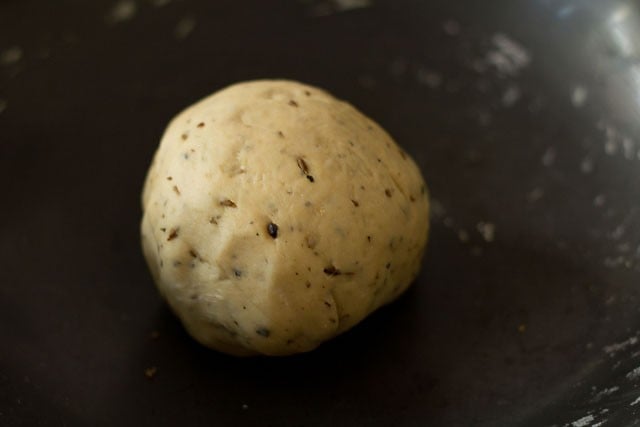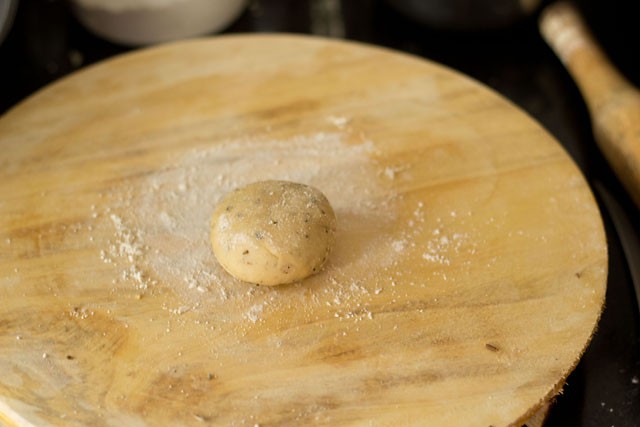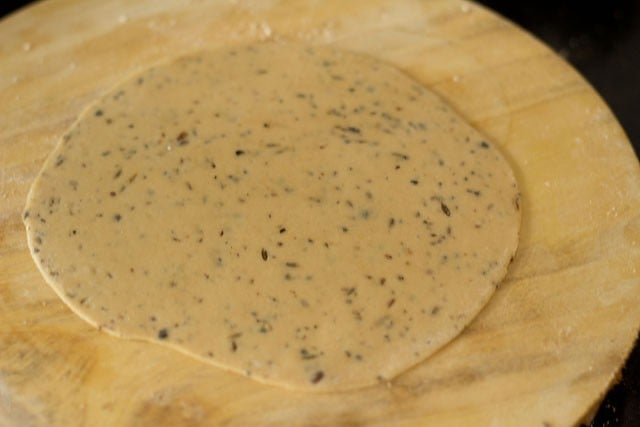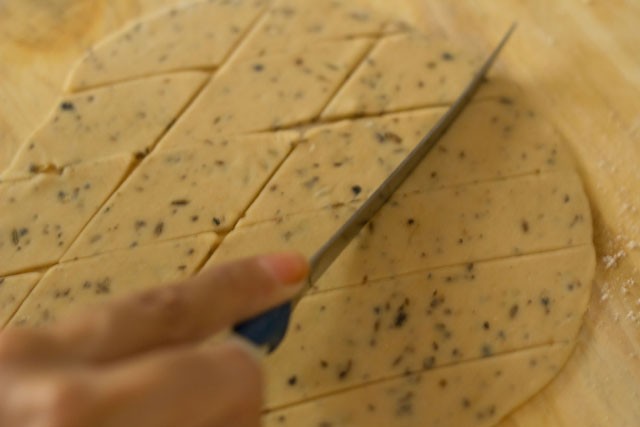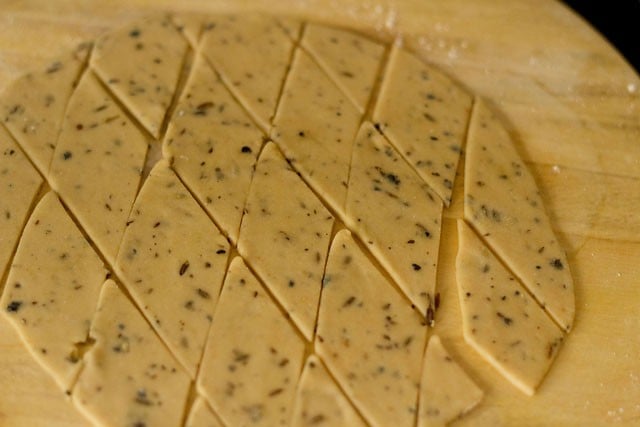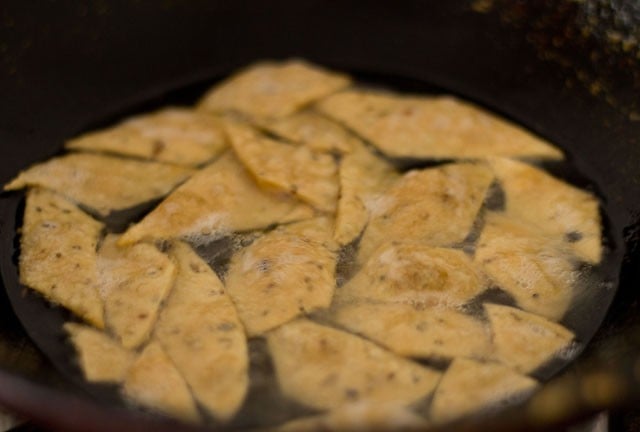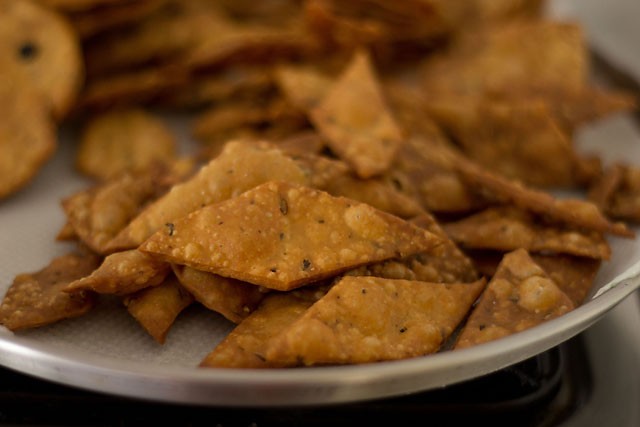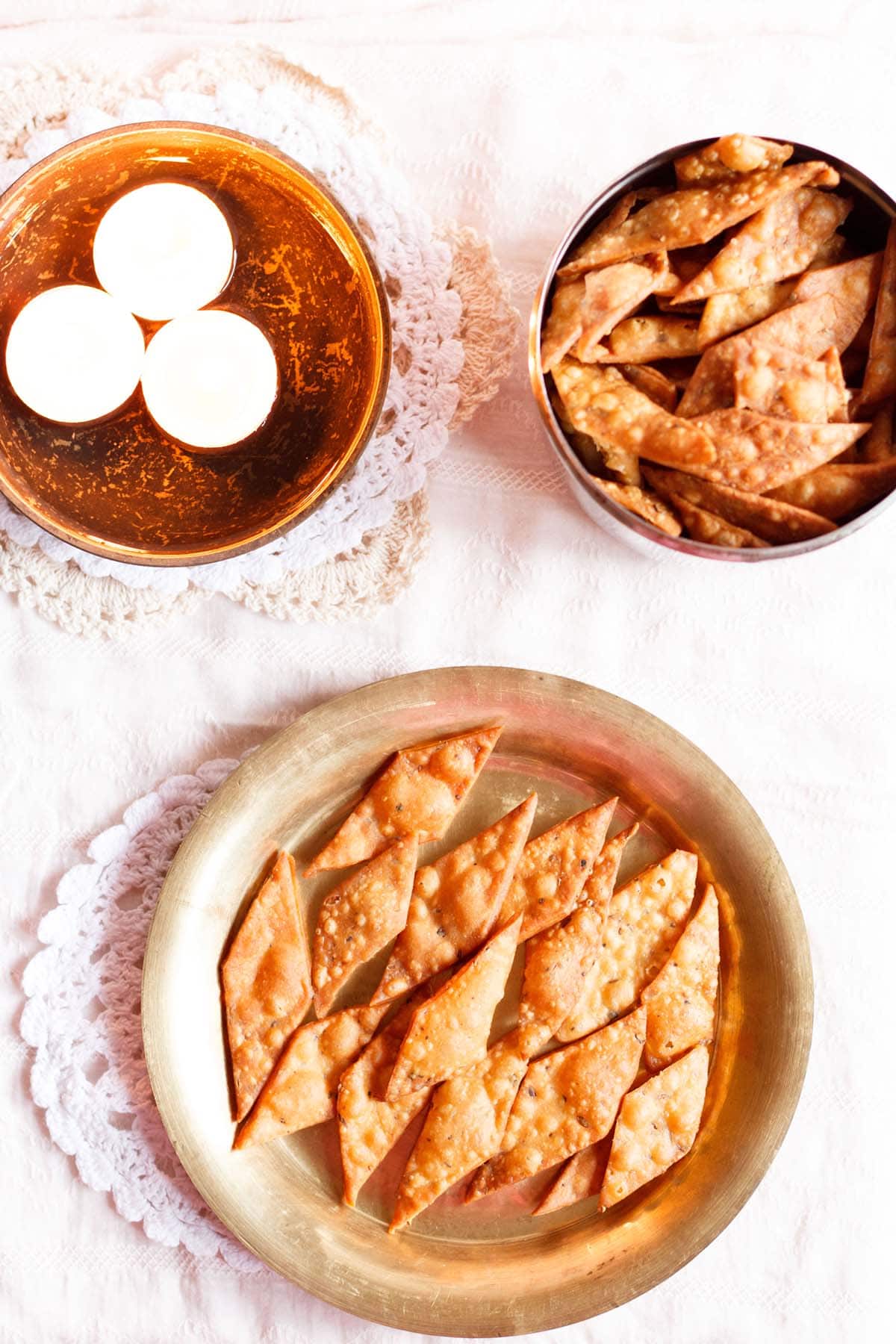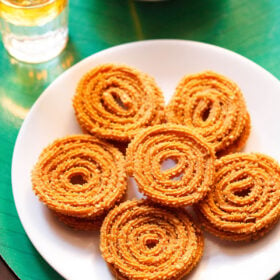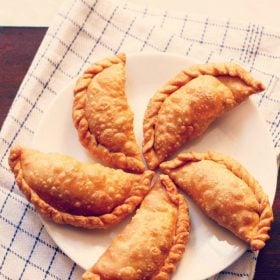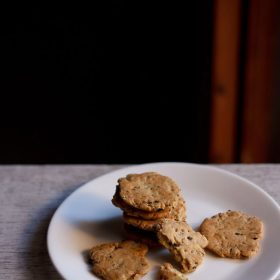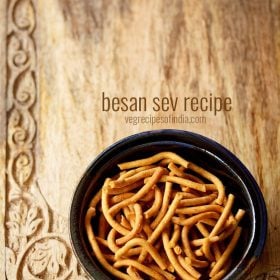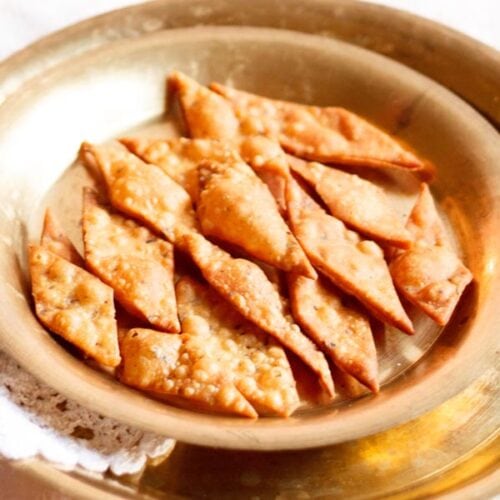What is Namak Para
It is obvious from the name Namak Para that this festive treat has ‘namak,’ which is salt in English, as the main seasoning. This is also the reason for it being termed as a savory snack. Along with this, the suffix ‘para (plural: pare)’ refers to ‘pieces.’ When put together, the name literally means ‘salty or salted pieces’ or even ‘salty bites.’ Basically, the Namak Para Recipe is a spiced and seasoned pastry dough, traditionally made of whole wheat flour, all-purpose flour or a combination of both. This is then rolled out and cut into strips, diamonds or squares. While the classic cooking method of these include them being deep-fried, these days a lot of people also air-fry or bake this snack for health concerns. Just like many other snacks and sweets having regional variations, Namak Para also is made in a variety of ways across the Indian subcontinent. This bite-sized snack can be crispy, flaky or spicy, but is essentially savory in all its variants. For instance, it is referred to as ‘nimki’ in West Bengal. The Maharashtrian version is known as Shankarpali. Also, the sweet version of the same is the shakkarpara.
About This Recipe
This tasty snack, also known as Savory Diamond Cuts is very easy to prepare and does not require many ingredients. Most of your time will be spent frying them as they need to be fried in batches. This Namak Para Recipe makes for a crunchy munchy snack that also puffs up while frying. You have to just knead a firm dough, which is spiced with carom seeds (ajwain), crushed black pepper, cumin seeds, and seasoned properly with salt (namak). Then, roll and cut the dough into the choice of shape you want (I usually prefer diamonds) and deep-fry to a perfect golden brown. The recipe of this Namak Para contains both whole wheat flour and all-purpose flour for crispiness. However, you can make them with one of the two flours, instead. I prefer to use whole wheat flour wherever possible. You can make these in bulk, store in an air-tight container and enjoy with tea for the next few weeks. They are excellent tea-time snacks as well as for festive occasions like Diwali and Karwa Chauth.
How to make Namak Para
Make Dough
- Mix all the ingredients for the pastry dough listed below and knead to a firm and stiff dough. Cover the dough with a moist kitchen cotton towel and set aside for 30 minutes. Add water in parts when kneading the dough.
1 cup whole wheat flour (atta) 1 cup all-purpose flour (maida) 1 teaspoon carom seeds (ajwain) 1 teaspoon crushed black pepper ¼ teaspoon baking soda ½ teaspoon salt or as required 2 tablespoons oil or ghee – if using oil, use a neutral oil ½ to ¾ cup water or as needed
- Pinch a medium-sized ball from the dough. Roll it to a neat smooth ball between your palms. Place it on a lightly dusted board. Sprinkle a bit of flour on top of the dough ball. Tip: Dusting the surface with flour prevents the dough from sticking to the board when rolling.
Make Namak Pare
- Using a rolling pin, roll the dough and make sure it is not too thick or thin, about 3 to 4 mm in thickness. Also, ensure that you have lightly dusted the dough and board. If you prefer, opt out of dusting the dough and board with flour.
- Use a serrated knife to slice diagonal cuts on the rolled dough. The dough should have equal-shaped diamonds.
- Add the diamond-shaped dough to a plate and cover them with a cloth. Keep aside for frying later.
Fry Namak Para
- Heat oil for frying in a kadai (wok). Keep the heat to medium to medium-high. The oil has to be moderately hot. Gently and carefully place some Namak Para diamonds in the hot oil. Make sure not to make the pan over crowded with the pieces. Turn over with a slotted spoon when one side has become crisp and golden. Fry the second side and turn over again when golden. Turning over a few times, fry Namak Pare for even browning. Tip: Make sure the oil is not too hot as you don’t want the Namak Para to burn.
- Fry until golden-brown and crisp. Drain them on a paper towel to remove excess oil. Fry the remaining batches this way.
- As soon as they cool, store in an air-tight jar or container. Serve Namak Pare with a cup of tea or as a snack. These keep well for a couple of weeks in an air-tight container at room temperature.
Expert Tips
Please be sure to rate the recipe in the recipe card or leave a comment below if you have made it. For more vegetarian inspirations, Sign Up for my emails or follow me on Instagram, Youtube, Facebook, Pinterest or Twitter. Chakli Recipe (Instant & Easy) Gujiya Recipe (Fried & Baked) Mathri Recipe (Mathiya or Mathari) Sev Recipe | Karasev | Besan Sev This Namak Para recipe from the archives, first published on November 2012 has been republished and updated on October 2023.
